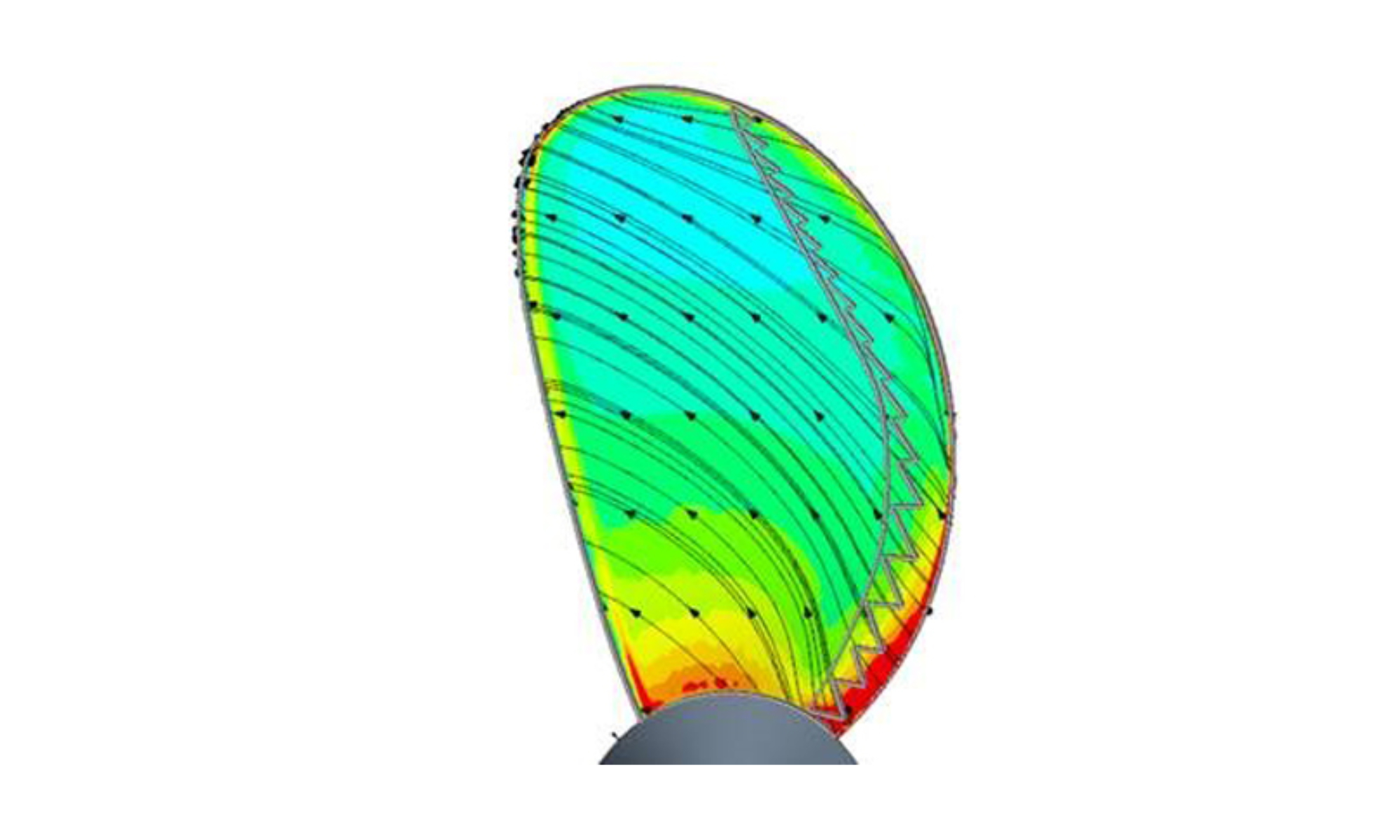DLBA UNIVERSITY
An Investigation of Turbulence Stimulation on 3D Printed Model Propellers
FEBRUARY 10, 2019
By Nicholas A. Husser and Adrian S. Onas
In this paper, the feasibility of experimentally testing 3D printed propellers was investigated at Reynolds numbers where scale effects were significant. Hama strips were printed on the leading edge of a B-series model propeller’s blades and open water tests were performed with both unstimulatedand stimulated propellers for ℝe=105to5×105. Two effects were studied, the first being the effect of the 3D printed material onpropeller hydrodynamics at model scale by comparing test results from theunstimulatedpropeller tests to the original B-series tests at the Netherlands Ship Model Basin (NSMB). Second, the effects of Hama strips on the propeller model test results are studied through comparison of unstimulatedand stimulated results at the same test conditions. Finally, the feasibility of the implementation of turbulence stimulators for model propeller testing is discussed.
In case you would like to receive more information or discuss about this subject, please contact Jeffrey Bowles.

References
Braslow, A.L., Hicks, R.M., and Harris, R.V. (1966). Use of Grit Type Boundary Layer Transition Trips on Wind-Tunnel Models. NASA Rpt. No. X66-20043.
Deters, R.W., Ananda, G.K., and Selig, M.S. (2014). “Reynolds Number Effects on the Performance of Small-Scale Propellers.” AIAA Rpt. No. 2014-2151.
Hadler, J.B. (2015) Wageningen B-series propeller experimental data archive, Webb Institute.
Hama, F.R., Long, J.D., and Hegarty, J.C. (1956) “On Transition from Laminar to Turbulent Flow.” University of Maryland Technical Note BN-81.
Kuiper, G. (1981). Cavitation Inception on Ship Propeller Models. TU Delft Doctoral Thesis.
Lerbs, H.W. (1951). “On the Effects of Scale and Roughness on Free Running Propellers.” American Society of Naval Engineers: Naval Engineers Journal.
Munson, B.L., Okiishi, T.H., Hubsch, W.W., Rothmayer, A.P. (2013). Fundamentals of Fluid Mechanics 7th Edition. New Jersey: John Wiley & Sons.
Oosterveld, M., Van Oossanen, P. (1975). Further Computer-Analyzed Data of the Wageningen B-Screw Series. NSMB Rpt. No. 479
Pope, A. (1984). Low-Speed Wind Tunnel Testing (2nd ed.). New York: John Wiley & Sons Inc.
Tagori, T. (1962). A Study of the Turbulence Stimulation Device in the Model Experiment on Ship Form. Journal of Zosen Kiokai, 112, 56-79.
Share this article online:
HOW CAN WE HELP YOU?
FEEL FREE TO CONTACT US

DLBA Naval Architects
860 Greenbrier Circle, Suite 201 Chesapeake, Virginia 23320 USA
Phone: 757-545-3700 | Fax: 757-545-8227 | dlba@gibbscox.com
STAY UPDATED
SIGN UP FOR OUR NEWSLETTER
Keep your finger on the pulse of the latest points of focus in naval architecture and engineering: subscribe to DLBA’s concise monthly newsletter. Within it, we briefly describe and picture our latest projects and concepts. We encourage feedback and seek to have our newsletter spark conversation regarding potential collaborations and further advancements as we share our passion for the industry.
